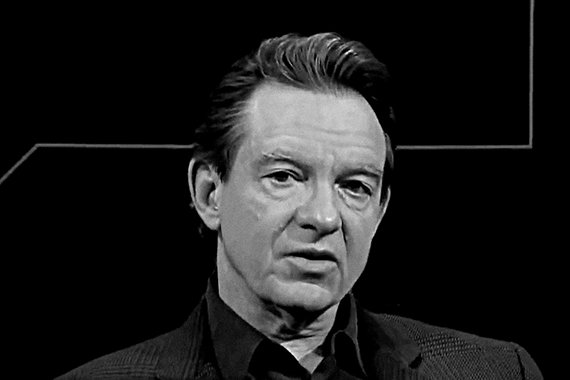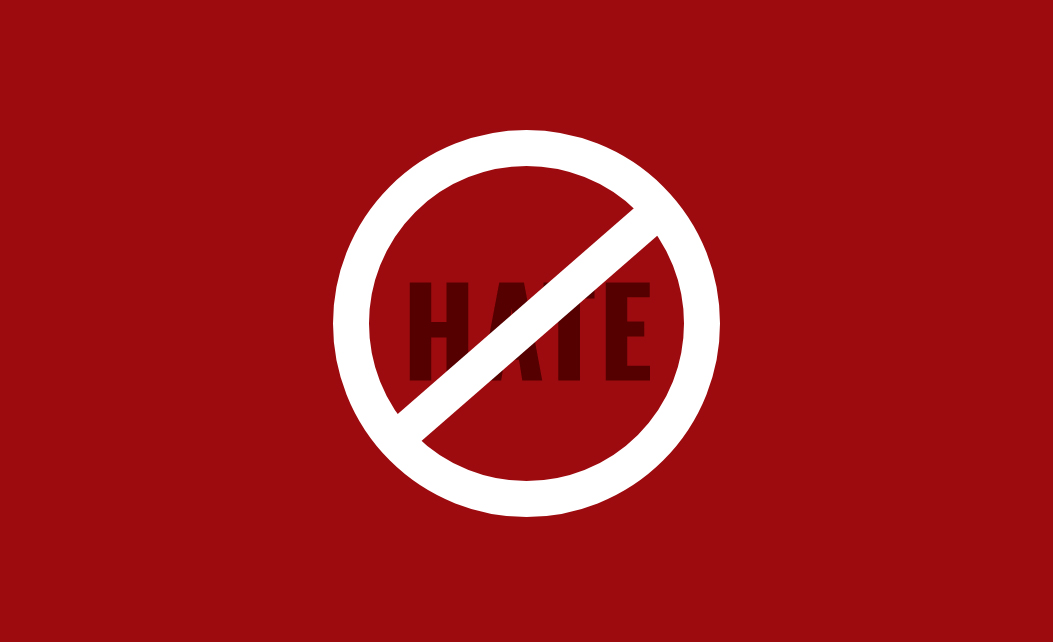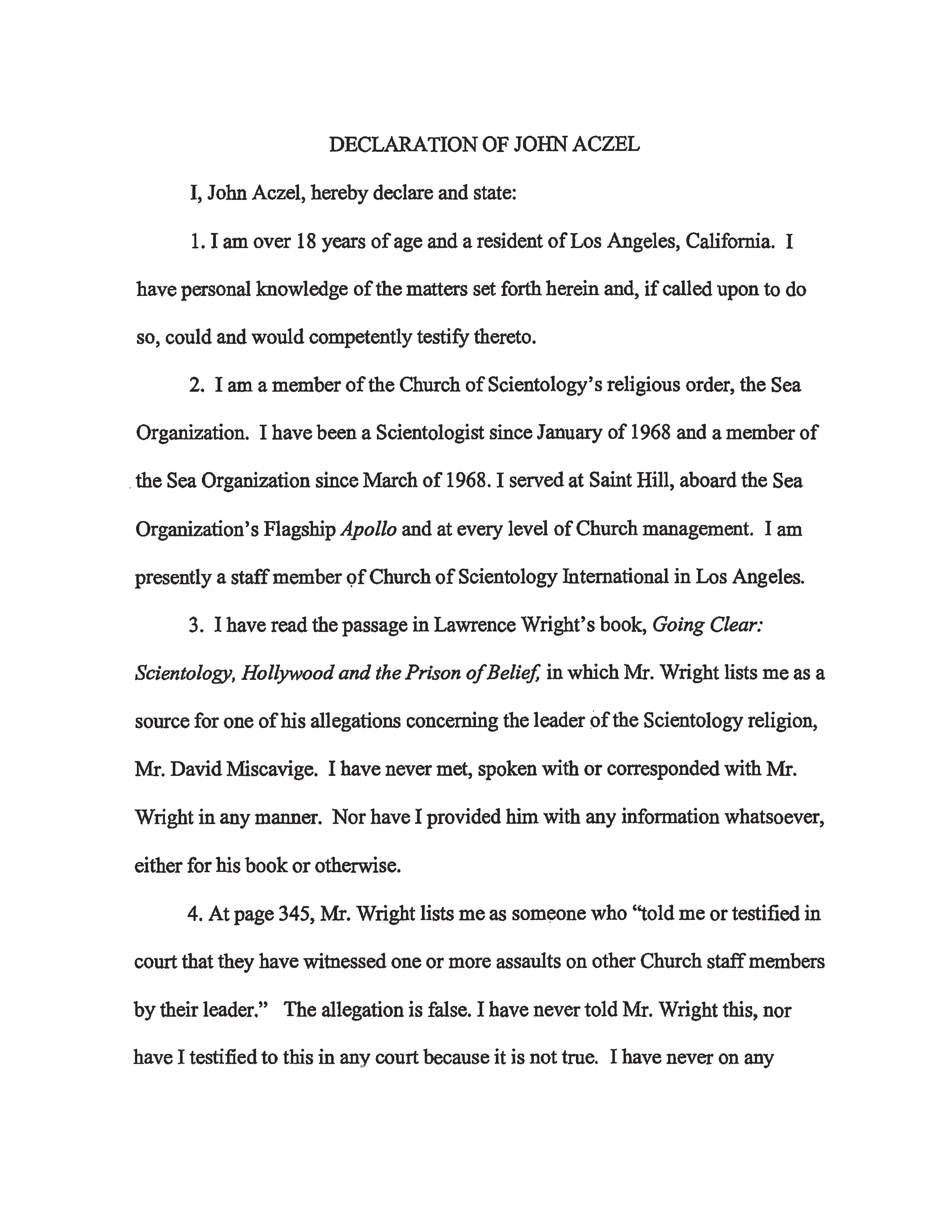
Lawrence Wright
Lawrence Wright is a master propagandist. His book on Scientology masquerades as fact but in reality is pure fiction. As detailed below, the book is so rife with falsehoods, so replete with factual errors, and so hopelessly misinformed on the religion that it constitutes mind-boggling propaganda in the form of psychobabble.
The book is uniformly derogatory and a compendium of falsehoods. Only discredited sources bent on lies and filled with prejudice are quoted. But even these discredited sources would not go as far as Wright wanted. Many of the most outrageous and sensationalistic statements in the book are made without any attribution whatsoever—in other words, Wright invented them out of whole cloth to further his fractured narrative.
Wright intended from the outset to unfairly attack the religion, its Founder and its religious leader and follow his toxic agenda in defiance of human rights principles prohibiting incitement to religious hatred and discrimination…
Wright repeats the most outrageous and salacious rumors of the past 60 years, taken from other books, tabloid media and the Internet—no matter how many times they have been disproven and discredited. Wright sensationalizes these falsehoods by embellishing them and altering and collapsing time so that an incident rumored to have occurred 60, 50 or 30 years ago seems current. Wright’s only criteria: whether the misinformation furthers his hidden agenda and is sensationalistic enough to alarm the misinformed and those new to the subject.
Although Wright states at the outset that the purpose of the book is to explore the subject of Scientology to objectively determine “what makes Scientology so popular to so many,” that statement represents nothing but the false premise of a propagandist.
Rather than examine and study the religion as he claims, Wright virtually ignores the subject except when he can distort it to present Scientology in a false light. Wright’s ignorance on the subject of the Scientology religion is so acute, it is astonishing.
Case in point: on page 13 of the book, Wright attempts to describe how the E-Meter, a religious artifact used by a minister in the religious practice of auditing, works. But Wright gets the most fundamental concepts of auditing and the E-Meter wrong.
Wright states: “If the needle on the meter moves to the right, resistance is rising; to the left, it is falling.” Yet, in reality it is the exact opposite. While this otherwise would be a minor matter, it shines a spotlight on the fact that Wright lied when he said he decided to write about Scientology to explore the subject, tellingly exposing that Wright did not spend a nanosecond attempting to understand the religion.
Wright purported to premise his New Yorker article and his book on an apostate, Paul Haggis. Haggis and Wright forwarded the story that Haggis left Scientology as a matter of principle because his daughters were discriminated against. When the Church examined this representation, it turned out to be a blatant lie—a straw man designed to falsely present Haggis as a man of character while framing Wright’s story through a distorted prism of principle. (See Paul Haggis.)
In reality, Wright intended from the outset to unfairly attack the religion, its Founder and its religious leader and follow his toxic agenda in defiance of human rights principles prohibiting incitement to religious hatred and discrimination, and fundamental media codes requiring objectivity, neutrality and a search for truth.
Rampant Falsehoods and Deception
From the beginning of Wright’s work on the New Yorker article on Scientology that he later morphed into his book, the Church made its position clear to Wright and his editor: It would provide full and open access to them for a profile on the Church or a Scientologist. But there was no interest by the Church if The New Yorker wanted to take sides with someone who left and openly disparaged the Church, misrepresenting its beliefs and policies. This request was ignored.
What followed was a 10-month odyssey that resulted in a 26-page, 24,605-word rehash of tired and disproven allegations. Freedom Magazine published a special report on Wright’s New Yorker article. Accompanying that special report are videos.
These serve to expose the rampant falsehoods, deception and underhanded tactics exercised by Wright in his writing of the piece. However, Wright made no attempt to rectify any of the obvious errors of both omission and commission in the book that followed in January 2013.
Like his article, Wright’s book is an outrageous piece of propaganda. Many of Wright’s most egregious falsehoods constitute hearsay and gossip lifted (in many instances verbatim) from the Internet. The book relies on both inherently unreliable (Wikipedia and Astro.com) and cretinous (Rotten.com) websites.
Other falsehoods are lifted and then regurgitated from discredited self-published “books” by apostates with an ax to grind. Further false statements put forward by Wright are based on interviews with a few disaffected former Church staff members thoroughly discredited and exposed as engaging in lies in previous misstatements attacking their former faith.
Many of Wright’s most egregious falsehoods constitute hearsay and gossip lifted (in many instances verbatim) from the Internet. The book relies on both inherently unreliable and cretinous websites.
Wright unquestionably accepted any statement from his sources and from the dark recesses of the Internet, no matter how ludicrous, as long as it slandered Scientology, Mr. Hubbard or the Church’s religious leader. For example:
- One of the individuals he claims to have “interviewed” for his book had never spoken or corresponded with Wright—in fact he had never even been contacted by Wright.
- A claim by a former Church member that she had been “held against her will” on a ship for some 12 years was easily disproven by photos and voluminous evidence that she left the ship hundreds of times, got married in the Bahamas, lounged on Caribbean beaches and made trips to Europe.
- Wright failed to vet a preposterous anecdote about a bank robbery that never occurred. Wright’s source spun a tale about a Scientologist bank teller, but no records or accounts exist that such a robbery ever happened. The source turns out to be a suspended and sanctioned lawyer, once declared by a court to be a vexatious litigant. His client has recanted past stories spun to the media about equally preposterous claims, such as that family members died in the Jonestown tragedy, which he later admitted he fabricated. And Wright could have and did not check FBI records. Because they have jurisdiction over all bank robberies and keep extensive records of each and every one, he would have discovered the incident never happened and that his anecdote was a myth.
- Wright relied on a source who has had no contact with Scientology since 1959 and who publicly retracted his claims under oath in May and July 1987, including admitting that his allegations were flights of fantasy and the product of his own imagination.
The Church of Scientology has published a compendium of the book’s most distorted falsehoods.
Deep Religious Bias
One of the most chilling, immoral and insidious aspects of the book is Wright’s deplorable tactic of using events concerning suicide and homicide by the apocalyptic groups Solar Temple, Heaven’s Gate and Aum Shinrikyo as a propaganda platform from which to launch “scare stories” about the possible threat that Scientology represents for other people in other places.
Having improperly lumped Scientology with these groups, Mr. Wright concedes that Scientology is neither apocalyptic nor insular, yet he nevertheless uses these apocalyptic events to make an outlandishly biased warning regarding fear of lethal violence spreading through Scientology and all New Religious Movements (NRMs):
What separated these groups from Scientology was their orientation toward apocalypse and their yearning for the end-time. That has never been a feature of Scientology. Clearly, however, the lure of totalistic religious movements defies easy categorization. Such groups can arise anywhere and spread like viruses, and it is impossible to know which ones will turn lethal, or why. Lawrence Wright
This is the classic language of ignorance fused with extreme religious bias. The late Bryan Wilson, Emeritus Fellow, University of Oxford, and the foremost academic authority on NRMs, identified this lumping together of diverse groups by the media as the epitome of religious intolerance.
Scholars in the field unanimously emphasize the diversity of these new movements, most of which have in common only the contemporaneity of their emergence. Yet, what is apparent is a tendency, evident in the media… for all NRMs to be lumped together as if they conformed to one particular stereotype. That this disposition is in itself inimical to the fair treatment of new religions must be apparent.
This knee-jerk categorization of Scientology with apocalyptic groups by a strong note of warning against the risk of similar destructive events spreading to other countries, is not only prejudiced, it also feeds directly into public fear and ignorance on the subject.
But worst of all is Wright’s referring to Scientology as spreading like a “virus” which may “turn lethal.” This is shocking language, amounting to hate speech and evidencing malice. There is of course only one thing to do against a lethal virus: eradicate it. This gratuitous “warning” is calculated to invoke fear, hatred and bigotry reminiscent of the vile Nazi propaganda of Goebbels and Streicher.
Wright’s referring to Scientology as spreading like a “virus” which may “turn lethal” … is shocking language, amounting to hate speech and evidencing malice.
This is the language of pure prejudice. The language and methodology of prejudice uses pejorative and provocative terms to disparage and to strike fear in the public as a substitute for reflective analysis. This represents the height of propaganda. This bias is clearly reflected in Wright’s book with its vicious attacks on his distorted rendition of Scientology religious beliefs.
Not surprisingly, Wright’s bias has produced an article, book and film about Scientology that have incited acts of hostility and violence against the Church, its religious leader and Scientologists. (See “The Price of Bigotry.”)
Wright’s bias against religious matters runs deep. In the 1980s, he described his disillusionment with the Methodist religion and religion in general:
Why had I lost my faith? It happened, slowly, that my faith was dissolving inside this shell of piety, and although the shell remained a while longer, the animal inside was dead.”
In 1988, Wright wrote:
I have seen friends struggle to throw off the narrow-minded strictures of Southern Baptism or the ritualistic magic of Catholicism or the tribal creeds of Judaism. I have encountered religion in extreme forms, from Hare Krishnas and Amish farmers to snake-handling charismatics.”
He felt a “low-grade envy” for stringent doctrines, adding:
A Methodist struggles in a fog, not really knowing what is to be believed or disbelieved but learning in a subliminal way what is to be avoided.
His 1993 book Saints and Sinners was a far cry from Wright’s ostensible “search for faith” and understanding of religious beliefs in America. As noted by Kirkus Reviews, “the six figures he profiles are patently chosen for journalistic sexiness rather than religious profundity.” He chose to write about two disgraced preachers (Walker Railey and Jimmy Swaggart), an atheist (Madalyn Murray O’Hair) and Satanist Anton LaVey. Finally, almost as an afterthought, he included a Catholic priest and a Baptist minister.
After a careful study of The Siege, a 1988 movie written by Wright, author Mamadou Chinyelu wrote that “the film was produced as a propaganda and psychological warfare operation to lay the groundwork for the demonization of Arabs or adherents to the Islamic Faith.”
In a 2012 article in The New Yorker, Wright went after the Church of Jesus Christ of Latter-day Saints:
Mormons now are overrepresented in Congress, with six senators (including Harry Reid, the majority leader) and ten House members. The Presidency is the last barrier to this extraordinary movement. Romney’s tumultuous journey through the primaries has shown that the relationship between this uniquely American religion and the country that it once aspired to leave is still unsettled.Lawrence Wright
Compare this attitude to a reporter’s obligations to seek out the truth and report it and to remain objective. The inescapable conclusion is that Lawrence Wright may quite possibly be the last author who should be reporting on matters involving religion.
Film Adaptation of Book
Lawrence Wright served as co-executive producer with Alex Gibney of the film adaptation of his book. In the film, Wright and Gibney take the worst propaganda in the book and ramp it up tenfold. (See Alex Gibney.)
At www.freedommag.org/going-clear are the results of extensive research by the Church to document the truth Wright and Gibney ignored, both as to the story they told and the people they relied on. This exposé contains 25 videos and 16 articles on Gibney and his sources, all with supporting documentation, as well as 30 letters the Church sent to Gibney and HBO, documenting the fraud Wright and Gibney perpetrated on their viewing public. The site also shows the truth about the Church of Scientology that Wright and Gibney chose to ignore.
Wright’s History of Getting it Wrong
Wright’s work is also regularly challenged by experts and even his own sources.
Wright’s best-known book, The Looming Tower: Al-Qaeda and the Road to 9/11, published in 2006, was criticized not only by The New York Times but also by experts who discovered major flaws in the book.
The New York Times reviewer Dexter Filkins wrote: “Wright has drawn up verbatim reconstructions of entire conversations, some of which took place more than a decade ago. Many of these conversations are riveting. Still, in some cases, it’s hard to believe that memories are that good.”
Author Kevin Fenton reviewed Looming Tower: “Wright’s conclusion is invalidated by the fact that he omits and distorts many of the relevant circumstances. It is not my place to accuse Wright of doing this deliberately; instead I would attribute his failings to lack of knowledge…”
Michael Scheuer, head of the CIA’s unit hunting Osama bin Laden in the 1990s, wrote: “I mistakenly thought that Mr. Wright was a serious writer, not a Democratic shill, but the book he produced is so far from the truth about what happened intelligence-wise before 9/11—at least as I experienced it, and I was pretty involved—that it is quite near a soap opera-like parody of reality, albeit spiced up with bits of sophomoric psychological analysis of the people he describes, Americans and Islamists alike.”
Author Steven Stotsky, criticizing a 2009 story by Wright, “Letter from Gaza: Captives,” wrote: “Wright’s reliance on biased sources becomes increasingly apparent with each successive factual misstep… he resorts to reciting dubious figures for Palestinian civilian casualties and destroyed civilian structures provided by biased sources.”
In March 2010, the Andean Information Network pointed out numerous inaccuracies in Wright’s story “Lithium Dream.” The article notes that some “inaccuracies stem from partial truths or unnecessary hyperbole” and that by relying too heavily on “experts,” Wright’s story reflects bias.
“Wright’s book is marred by a profusion of factual errors not common in good history, even in good journalistic history.”
Professor Benny Morris, a historian writing in The National Interest, pointed out defects in Wright’s 2014 book, Thirteen Days in September—Carter, Begin, and Sadat at Camp David. In an extensive article titled “Wright is Wrong,” Morris says that “Wright’s book is marred by a profusion of factual errors not common in good history, even in good journalistic history.” He says that beyond the factual errors, he found the book slanted and “propagandistic.”
Wright the Propagandist
The purpose of propaganda is to manipulate perceptions by spreading misinformation that instills fear and hatred to injure a person or group. Wright’s book and the film adaptation of that work constitute classic propaganda designed to incite discrimination and hatred against a peaceful religious group.
References:








